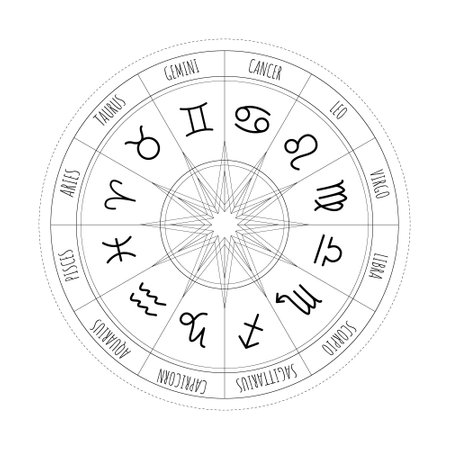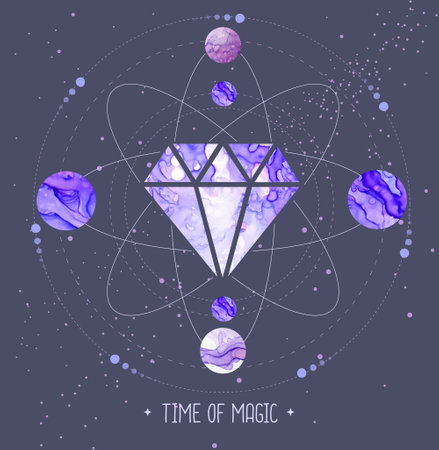Understanding Benefic and Malefic Planets in Vedic Astrology
In the world of Vedic astrology, or Jyotish Shastra as we fondly call it in India, every planet has its own unique energy and influence on our lives. The terms ‘Shubh’ (benefic) and ‘Ashubh’ (malefic) are frequently used when analysing a Kundli, or birth chart. But what do these terms really mean for you and your destiny? Well, in simple desi lingo, Shubh planets are like your well-wishers – they bring positivity, growth, and good fortune. On the other hand, Ashubh planets are those relatives who always show up with a bit of drama, bringing challenges and lessons your way.
The classification of planets into benefic and malefic is not just random; it is rooted deeply in the wisdom passed down through generations in Indian culture. For instance, Jupiter (Guru) and Venus (Shukra) are traditionally considered Shubh grahas because they promote prosperity, harmony, and happiness in your life. Rahu and Ketu, however, are classic examples of Ashubh grahas known for creating confusion or unexpected twists—think of them as the plot-twisters in your personal Bollywood movie!
Understanding whether a planet is benefic or malefic in your individual Kundli is crucial because it helps you navigate lifes ups and downs with more clarity. These planetary influences can affect everything from your career to relationships, even your health. It’s no wonder that most Indian families consult their family pandit before making big decisions like marriage or starting a new business! By learning how to identify these energies in your birth chart, you can align yourself better with cosmic rhythms and invite more positivity into your daily routine.
2. Basics of Your Kundli: Houses and Planetary Placement
If you’re just starting your journey into Vedic astrology, understanding the basics of your Kundli (birth chart) is essential. The Kundli is like a cosmic snapshot taken at the exact time and place of your birth, mapping out where each planet (graha) was positioned in the sky. This map is divided into twelve segments, called houses or bhavas, each representing a different aspect of your life.
The Twelve Houses in Your Kundli
Each house in your Kundli has its own unique significance. Here’s a quick reference to help you connect with these energies:
| House Number | Sanskrit Name | Main Focus |
|---|---|---|
| 1st House | Lagna / Tanu Bhava | Self, personality, physical body |
| 2nd House | Dhana Bhava | Wealth, family, speech |
| 3rd House | Sahaja Bhava | Siblings, courage, communication |
| 4th House | Sukha Bhava | Home, mother, comforts, property |
| 5th House | Putra Bhava | Children, creativity, education |
| 6th House | Shatru Bhava | Enemies, debts, health issues |
| 7th House | Kala Bhava | Marriage, partnerships, spouse |
| 8th House | Ayu Bhava | Lifespan, transformation, occult sciences |
| 9th House | Dharma Bhava | Fortune, higher learning, spirituality |
| 10th House | Karma Bhava | Career, profession, public image |
| 11th House | Labh Bhava | Gains, aspirations, elder siblings |
| 12th House | Vyaya Bhava | Expenses, losses, moksha (liberation) |
The Role of Planetary Placement (Graha Sthiti)
The nine primary planets (Nava Graha: Sun/Surya, Moon/Chandra, Mars/Mangal, Mercury/Budha, Jupiter/Guru/Brihaspati, Venus/Shukra, Saturn/Shani, Rahu and Ketu) occupy these houses at the time of your birth. The placement and strength of each planet—whether it is swa rashi (own sign), uchcha (exalted), or neecha (debilitated), as well as its relationship with other planets—determine whether it acts as a benefic (favourable) or malefic (unfavourable) influence in your chart.
A Quick Example:
If Jupiter (Guru), considered the most auspicious planet by many Indian astrologers, is placed in your Lagna and is strong (uchcha or swa rashi), it can bestow wisdom and prosperity. However, if Saturn (Shani) is placed in the 6th house and forms harsh aspects (dristi) with malefic planets like Mars or Rahu, it may bring challenges related to health or debts.
The Takeaway for Your Kundli Analysis:
Your Kundli’s structure—houses and planetary placements—is the foundation for identifying which planets are benefic or malefic for you personally. As we dive deeper into the specific roles of each planet in upcoming sections, keep this basic framework handy!

3. Clues to Identifying Benefic Planets
Spotting the Good Guys in Your Kundli
In Vedic astrology, benefic planets are those cosmic friends who bring you blessings, harmony, and growth. Among the most celebrated benefics are Jupiter (Guru), Venus (Shukra), and Moon (Chandra). But how do you actually spot these positive influences in your kundli? Let’s break it down with some classic clues used by Indian astrologers.
Jupiter (Guru): The Divine Teacher
When Jupiter is strong in your chart—especially if it sits in Kendra houses (1st, 4th, 7th, or 10th) or Trikona houses (1st, 5th, 9th)—you can expect wisdom, prosperity, and respect. Look for Jupiter in its own sign (Sagittarius or Pisces), exalted in Cancer, or forming a Gajakesari Yoga with the Moon. Such placements usually bless you with optimism, learning ability, and good fortune. If Guru aspects your Lagna (ascendant), Dhana bhava (2nd house), or Putra bhava (5th house), it often indicates a golden touch in those areas of life.
Venus (Shukra): The Planet of Love and Luxury
Venus shines best when placed in Libra or Taurus (its own signs) or exalted in Pisces. When Shukra is positioned in the 1st, 4th, 7th, or 10th house—and not afflicted by malefics—you’re likely to enjoy material comforts, harmonious relationships, artistic talents, and a knack for attracting beauty into your life. Watch out for special yogas like Malavya Yoga (Venus in a Kendra and strong), which multiplies these gifts.
Moon (Chandra): The Mind and Emotions
A well-placed Moon brings emotional stability and mental peace. It is considered benefic when waxing (Shukla Paksha), especially in Cancer or Taurus. The Moon’s strength is amplified when it forms Gajakesari Yoga with Jupiter or occupies Kendra/Trikona houses without affliction from Saturn, Rahu, or Ketu. Such a Moon supports intuitive abilities and public popularity—think of that person who always stays calm during any family function!
Bonus Tips: Positive Combinations
Keep an eye out for combinations like Lakshmi Yoga (strong Venus with strong benefic planets) and Chandra-Mangal Yoga (Moon with Mars), which can further amplify prosperity and happiness. Also remember: benefics work best when they are unafflicted by malefics and well-supported by friendly planets.
By checking these placements and combinations in your kundli, you can easily spot where divine support is lighting up your life path—making everyday living just a bit more auspicious!
4. Spotting Malefic Planets and Their Indicators
In Vedic astrology, malefic planets—known as “paap grahas”—can bring about challenges, obstacles, or delays in different aspects of your life. The primary malefics include Saturn (Shani), Mars (Mangal), Rahu, and Ketu. Let’s decode how you can identify these tricky energies in your Kundli using traditional markers and some handy tips straight from our Indian astrological heritage.
Major Malefic Planets in Your Kundli
| Planet | Common Names | Typical Challenges |
|---|---|---|
| Saturn | Shani | Delays, hardships, restrictions |
| Mars | Mangal | Anger, accidents, disputes |
| Rahu | – | Confusion, obsessions, sudden changes |
| Ketu | – | Dissatisfaction, detachment, spiritual confusion |
Traditional Indian Markers for Malefic Influence
- Saturn (Shani): If Shani is placed in the 1st, 4th, 7th, 8th or 12th house or is conjunct with the Moon (forming “Shani Sade Sati” or “Dhaiya”), it often indicates periods of hardship and slow growth. Look out for Saturn’s aspect on key houses—it tends to restrict wherever it influences.
- Mars (Mangal): A strong Mars in the 1st, 4th, 7th, 8th or 12th house gives rise to “Manglik Dosha,” which can cause turbulence especially in marriage. Check if Mars is aspecting sensitive points like the Moon or Venus for extra caution.
- Rahu: When Rahu sits in angular houses (1st, 4th, 7th, 10th) or closely impacts the ascendant lord, it brings unexpected twists and material cravings. Traditional texts also warn of Rahu’s association with illusion and maya.
- Ketu: Ketu’s presence in angular or trine houses can signal spiritual confusion or detachment from worldly affairs. It often makes a person feel unsettled or dissatisfied even amidst success.
Handy Tips to Identify Malefic Impact
- If multiple malefics are clustered together (“Paap Kartari Yoga”), expect more pronounced challenges—especially if they sandwich a benefic planet or your ascendant.
- The absence of benefic aspect (from Jupiter or Venus) on a malefic increases its negative results.
Cultural Note:
Many families consult their local pandit ji before major events like shaadi (wedding) or grah pravesh (housewarming) to check for doshas caused by these planets. Remedies such as wearing a black thread for Shani dosha or chanting Hanuman Chalisa for Mangal dosha are commonly practised across India.
5. Role of Planetary Aspects, Combustion, and Doshas
In Vedic astrology, simply knowing whether a planet is generally benefic or malefic is not enough. The way planets interact through aspects (drishti), their state of combustion (asta), and the presence of doshas can greatly influence how they behave in your kundli.
Understanding Drishti: The Planetary Aspects
Aspects, or drishti, are like the glances planets cast on each other’s houses in your birth chart. For example, Jupiter’s 5th, 7th, and 9th aspects are considered highly auspicious, often spreading positive vibes wherever they fall. On the other hand, Saturn’s 3rd, 7th, and 10th aspects can bring challenges or delays, especially if Saturn is already a malefic for your lagna. Rahu and Ketu’s aspects can intensify confusion or sudden changes.
The Indian Touch: Interpreting Drishti
In Indian tradition, elders might say “Shani ki drishti pad gayi” (Saturn’s aspect has fallen here), indicating a period when things might slow down or feel stuck. Similarly, “Guru ki drishti hai” (Jupiter’s aspect is here) brings hope for growth and blessings.
Combustion (Asta): When Planets Lose Their Power
A planet becomes combust (asta) when it comes too close to the Sun. This is particularly important for Venus and Mercury in Indian horoscopes. For example, if Shukra (Venus) is combust in your chart, its ability to deliver good results related to relationships or wealth may get diminished—even if it’s normally benefic! Combust Mars (Mangal) may reduce courage or energy levels.
Desi Wisdom: Not All Combustions Are Equal
Your local panditji might check how close the planet is to Surya Devta (the Sun) before making predictions about marriage or career because a combust planet sometimes acts as if it has lost its voice—its positive qualities become muted.
Doshas: Special Yogas That Alter Results
Certain planetary combinations create doshas—special conditions that can turn even a benefic planet into a source of trouble. Classic examples include Mangal Dosh (caused by Mars being in certain houses) which can affect marriage prospects, and Shani Dosh (related to Saturn), which may bring obstacles in career or health.
Local Lingo: Remedies for Doshas
If someone says “Mangal Dosh hai mere kundli mein,” you’ll know they’re talking about facing delays or issues in shaadi (marriage). In such cases, remedies like visiting Hanuman Mandir on Tuesdays or wearing a red coral ring are commonly suggested across India.
In summary, understanding these three factors—aspects (drishti), combustion (asta), and doshas—is crucial for anyone trying to judge whether a planet will act as a friend or foe in your kundli. It’s not just about the planet itself but also how it interacts with others and what yogas or doshas are at play according to timeless Indian astrological traditions.
6. Remedies and Positive Practices from Indian Culture
In the rich tapestry of Indian astrology, identifying benefic and malefic planets in your kundli is only the first step. The next is to balance their energies through time-honoured remedies and positive practices known as upayas. These traditional solutions, rooted deeply in Indian culture, can help reduce the negative impact of malefic planets and amplify the blessings of benefic ones in daily life.
Pujas and Rituals
Performing specific pujas (rituals) is one of the most popular ways to appease malefic planets and seek blessings from benefic ones. For example, reciting the Hanuman Chalisa on Tuesdays is believed to counteract Mars-related doshas, while offering water to Lord Surya (the Sun) every morning is said to strengthen the effects of a benefic Sun. Many families consult their local pandit or temple priest for guidance on the right puja according to their planetary positions.
Gemstones: Nature’s Vibrations
Wearing gemstones that correspond to particular planets is a widely followed practice in India. Each gemstone—like yellow sapphire for Jupiter (Guru), blue sapphire for Saturn (Shani), or red coral for Mars (Mangal)—is believed to carry unique vibrations that can either pacify or empower planetary influences. However, it’s crucial to wear these stones only after proper consultation with an experienced astrologer, as wearing the wrong stone can sometimes intensify negative effects.
Lifestyle Tips for Everyday Balance
Small yet meaningful lifestyle changes can also make a big difference. For instance, donating to charity on Saturdays is thought to reduce Saturn’s harshness, while keeping your surroundings clean pleases Mercury (Budh). Practicing regular meditation and chanting mantras—such as “Om Namah Shivaya” for general well-being or “Om Shani Sharanam” for Saturn—can bring peace and clarity, helping you align better with your planetary energies.
Traditional Upayas You Can Try
- Feeding birds or cows on specific days linked to certain planets
- Wearing specific colours aligned with planetary days—for example, yellow on Thursdays for Jupiter
- Observing fasts (vrats) on auspicious days like Ekadashi or Pradosham
Cultural Wisdom for Modern Life
Remember, these remedies are not just rituals—they’re a way to connect with the cosmic energies described in your kundli. By embracing these age-old practices from Indian culture with faith and consistency, you can find more harmony and positivity in your everyday journey, regardless of what your stars say!

